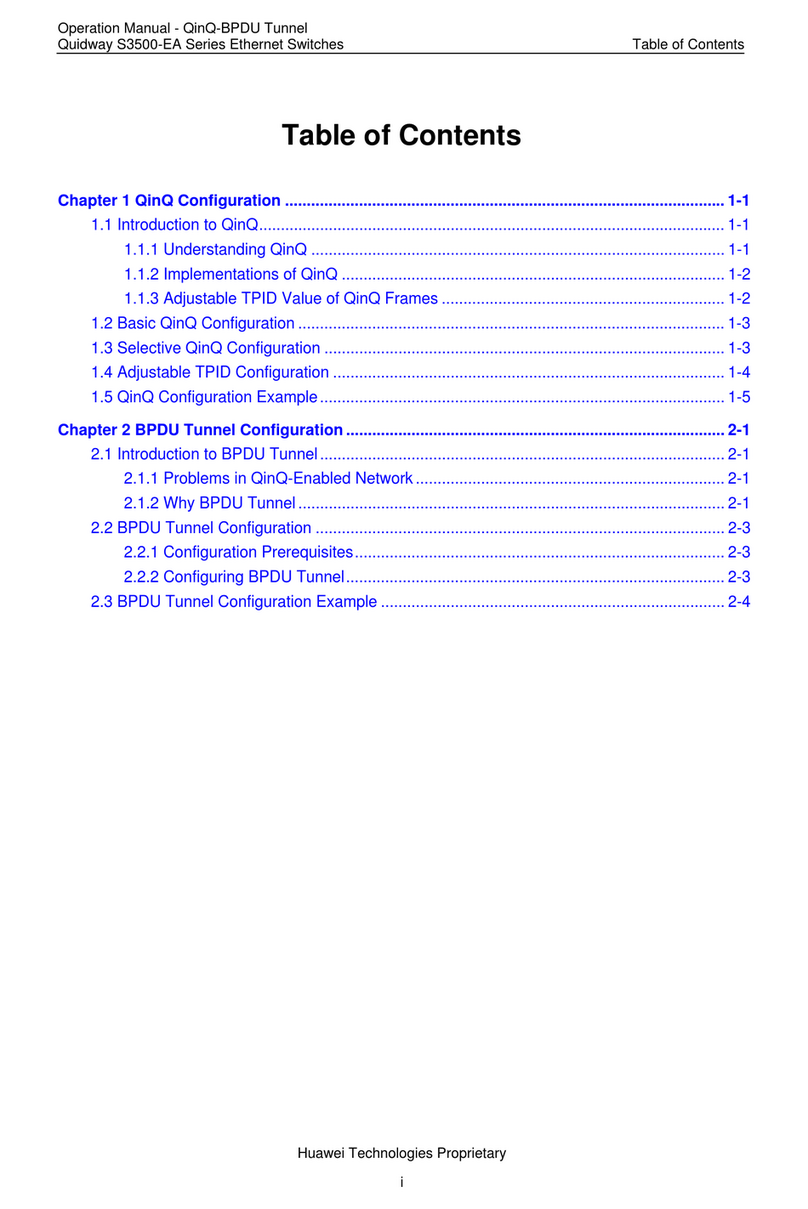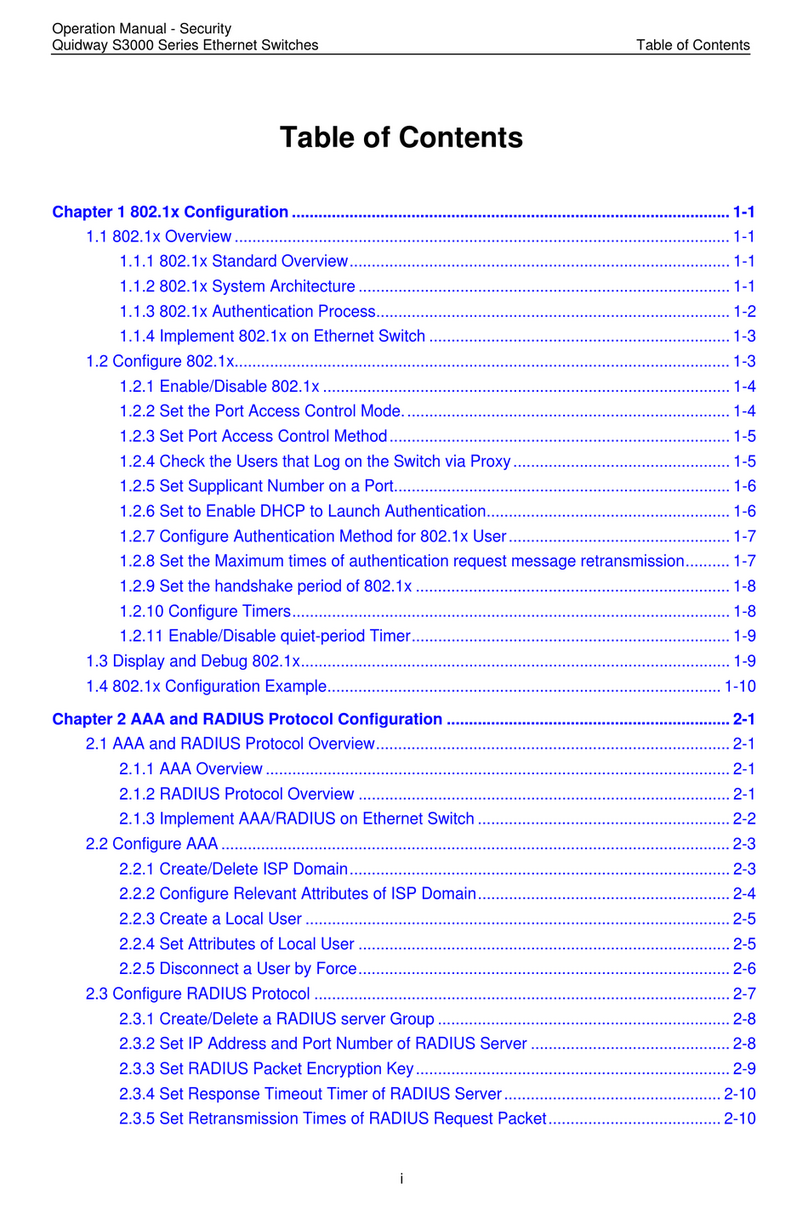
2.6.2 Configure an IP Addresses for the Interface............................................................................................18
2.6.3 Enabling Proxy ARP Within a VLAN....................................................................................................18
2.6.4 Checking the Configuration.....................................................................................................................18
2.7 Configuring Proxy ARP Between VLANs.......................................................................................................19
2.7.1 Establishing the Configuration Task.......................................................................................................19
2.7.2 Configuring an IP Addresses for the Interface........................................................................................20
2.7.3 Enabling Proxy ARP Between VLANs...................................................................................................20
2.7.4 Checking the Configuration.....................................................................................................................20
2.8 Maintaining ARP..............................................................................................................................................21
2.8.1 Clearing ARP Entries..............................................................................................................................21
2.8.2 Monitoring Network Operation Status of ARP.......................................................................................21
2.8.3 Debugging ARP.......................................................................................................................................22
2.9 Configuration Examples...................................................................................................................................22
2.9.1 Example for Configuring ARP................................................................................................................22
2.9.2 Example for Configuring Routed Proxy ARP.........................................................................................25
2.9.3 Example for Configuring Intra-VLAN Proxy ARP................................................................................27
2.9.4 Example for Configuring Inter-VLAN Proxy ARP................................................................................29
2.9.5 Example for Configuring Layer 2 Topology Detection..........................................................................32
3 IP Performance Configuration..................................................................................................35
3.1 Introduction to IP Performance........................................................................................................................36
3.2 IP Performance Supported by the S2700..........................................................................................................36
3.3 Optimizing IP Performance..............................................................................................................................36
3.3.1 Establishing the Configuration Task.......................................................................................................36
3.3.2 Enabling an Interface to Check the Source IP Addresses of Packets......................................................37
3.3.3 Configuring ICMP Attributes..................................................................................................................38
3.3.4 Setting TCP Parameters...........................................................................................................................38
3.3.5 Checking the Configuration.....................................................................................................................39
3.4 Maintaining IP Performance.............................................................................................................................40
3.4.1 Clearing IP Performance Statistics..........................................................................................................40
3.4.2 Monitoring the Running Status of IP Performance.................................................................................41
3.4.3 Debugging IP Performance.....................................................................................................................41
3.5 Configuration Examples...................................................................................................................................42
3.5.1 Example for Disabling the Sending of ICMP Host Unreachable Packets...............................................42
4 DNS Configuration.....................................................................................................................46
4.1 Introduction to DNS.........................................................................................................................................47
4.2 DNS Supported by the S2700...........................................................................................................................47
4.3 Configuring DNS..............................................................................................................................................47
4.3.1 Establishing the Configuration Task.......................................................................................................47
4.3.2 Configuring Static DNS Entries..............................................................................................................48
4.3.3 Configuring Dynamic DNS.....................................................................................................................48
4.3.4 Checking the Configuration.....................................................................................................................49
4.4 Maintaining DNS..............................................................................................................................................50
Quidway S2700 Series Ethernet Switches
Configuration Guide - IP Service Contents
Issue 01 (2011-07-15) Huawei Proprietary and Confidential
Copyright © Huawei Technologies Co., Ltd.
v































